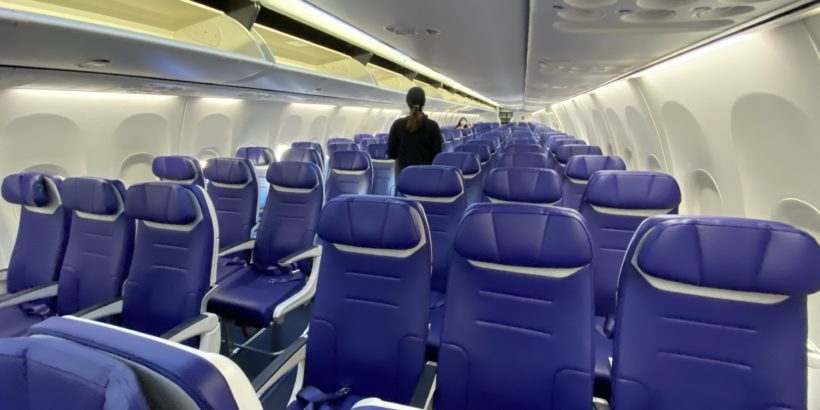Flying during coronavirus is a very different experience.
You can sense how on edge most passengers are from the time you are waiting to board, through the flight, and to the time you make your way through baggage claim in a deserted airport.
In order to make things safer for passengers and also to help them feel more comfortable flying, airlines have implemented several different types of policies.
The most noticeable policy is the mandatory requirement to wear masks that most of the airlines now have in place.
Passengers are required to wear a mask or face covering through the entire duration of the flight except for times when eating or drinking.
Airlines have also cut down on drink and meal service or put in a replacement such as serving snack boxes.
But one policy that only certain airlines have adopted is blocking out the middle seat.
This has been one of the most welcomed policies by passengers, especially those who fly economy.
But many people probably have questioned whether or not having a middle seat blocked out is even effective or is it all about show?
Well, it looks like having the middle seat blocked out could cut down on infection rates to a large degree.
According to a statistical model compiled by Arnold Barnett, the George Eastman Professor of Management Science at MIT’s Sloan School of Management, the average risk of catching COVID-19 from flying on a plane is 1 in 4,300.
That rate is almost double the risk compared to what the risk would be if airlines left the middle seat open.
In terms of the risk of fatality, these figures would put the rate of dying from coronavirus caught on a plane to one in 430,000 which is much more likely than the risk of dying by an airplane crash which is one in 34 million.
It’s important to note that this study has not been peer reviewed yet so we have to be careful about adopting all of its data as truth.
However, I’m sure that airlines who do not currently block out the middle seat will not be happy with the results of the study if they survive peer review.
Right now, airlines like Delta have a policy to not sell middle seats through the end of September but American and United Airlines are currently selling middle seats.
United’s chief executive, Scott Kirby, has basically said that social distancing is not possible on a plane, “if you look at an airplane, airplanes don’t have social distancing.”
While that is true for the most part, that still does not mean that creating more distance and getting as socially distant as possible is not beneficial on a significant level.
And that is exactly what the study purports to show.
“United asserts that there are no such implications, that middle-seat-empty is a PR measure and not a safety measure,” said Barnett. “That simply isn’t true.”
“The basic formula says that for every additional meter, the risk goes down by a factor of two,” Barnett stated. “So in that sense, two meters is only half as risky as one meter and three meters is only half as risky as two.”
There is a lot of data out there regarding the effectiveness of air filters on planes which would make aircraft cabins a pretty safe place to be when it comes to not catching an infection.
But are those filtration systems enough to reduce the risk of transmitting the virus particles to someone brushing elbows with you?
This is yet another area where there is conflicting opinions and data and so we may not know for sure what the risks are until more time has gone by.
Daniel Gillaspia is the Founder of UponArriving.com and the credit card app, WalletFlo. He is a former attorney turned travel expert covering destinations along with TSA, airline, and hotel policies. Since 2014, his content has been featured in publications such as National Geographic, Smithsonian Magazine, and CNBC. Read my bio.

